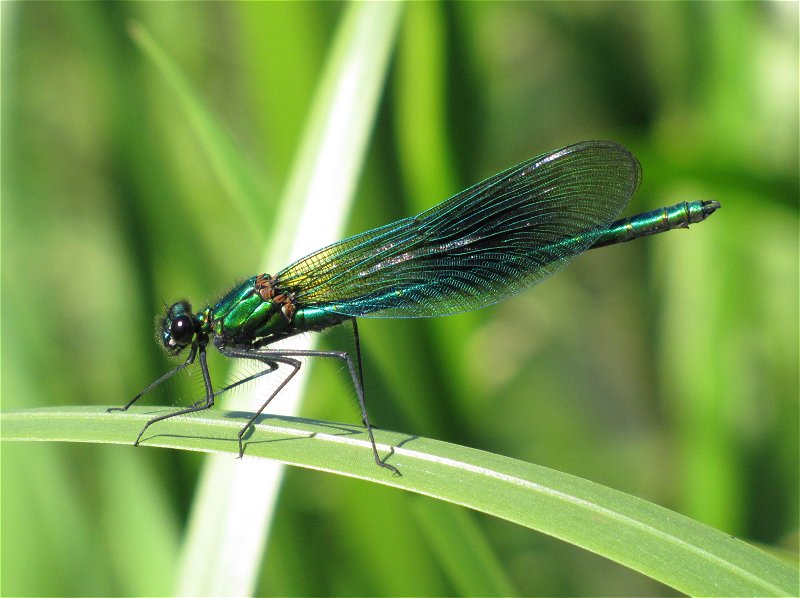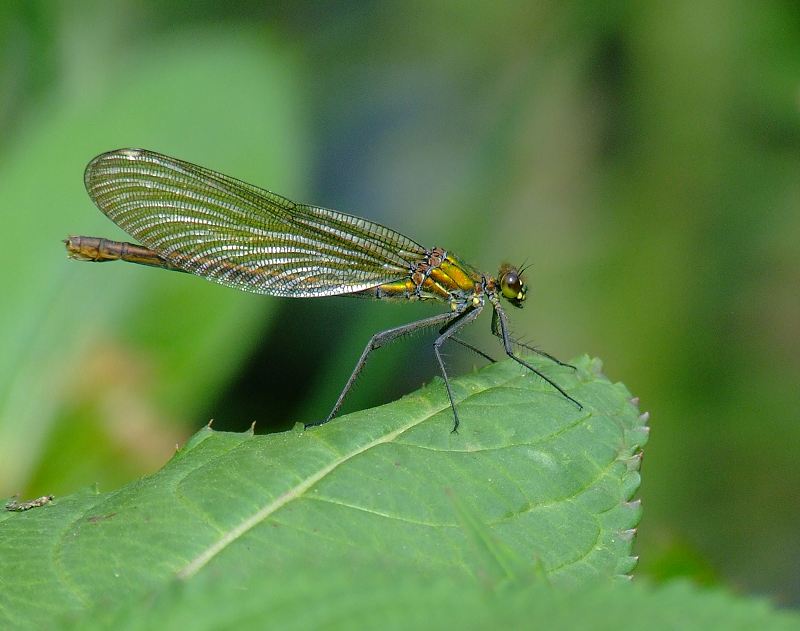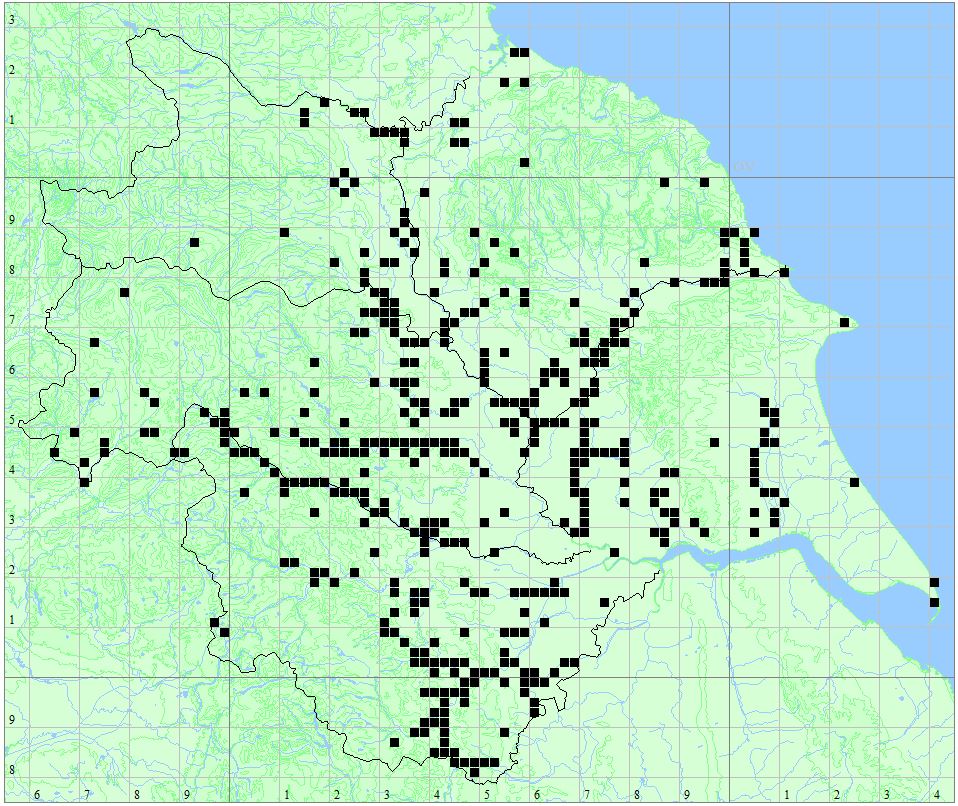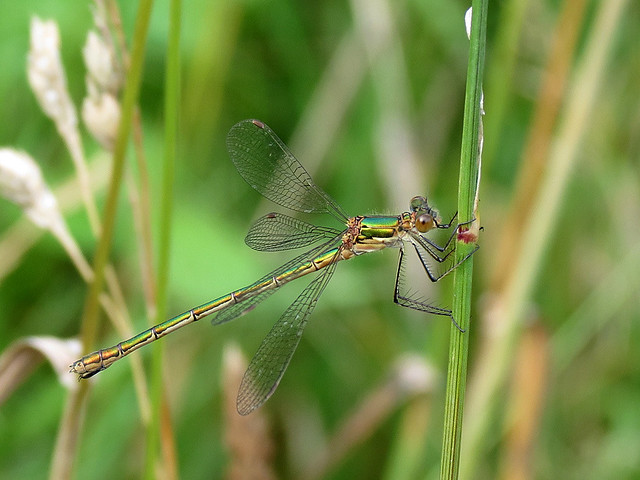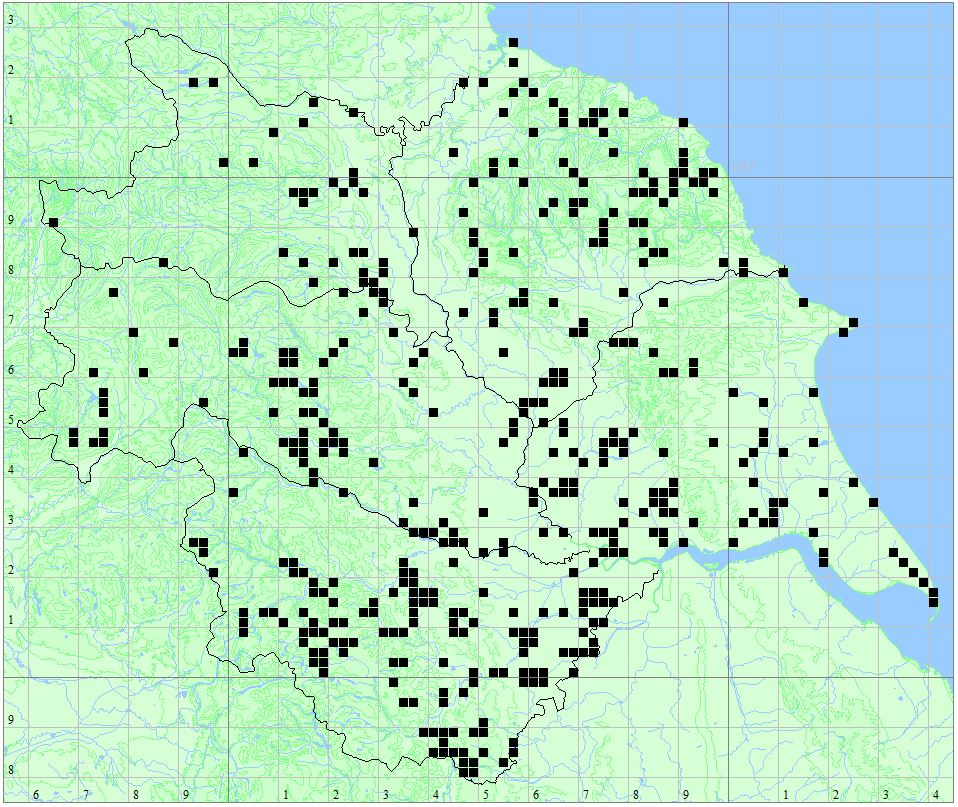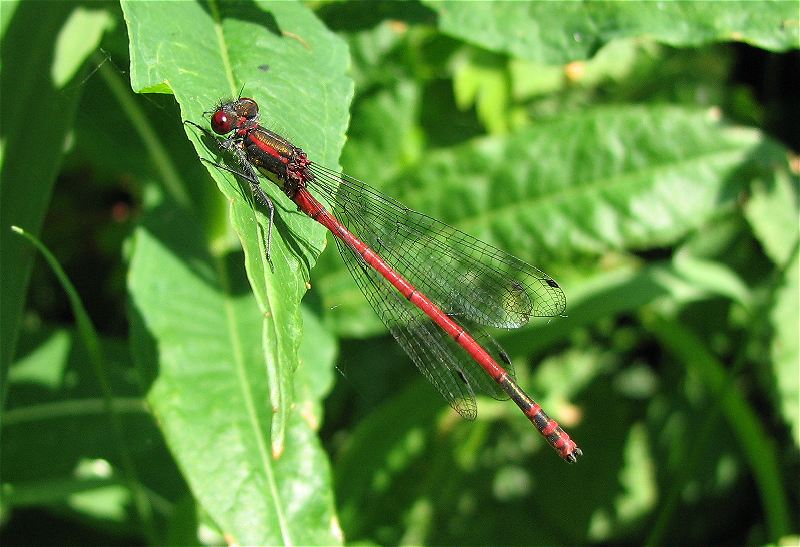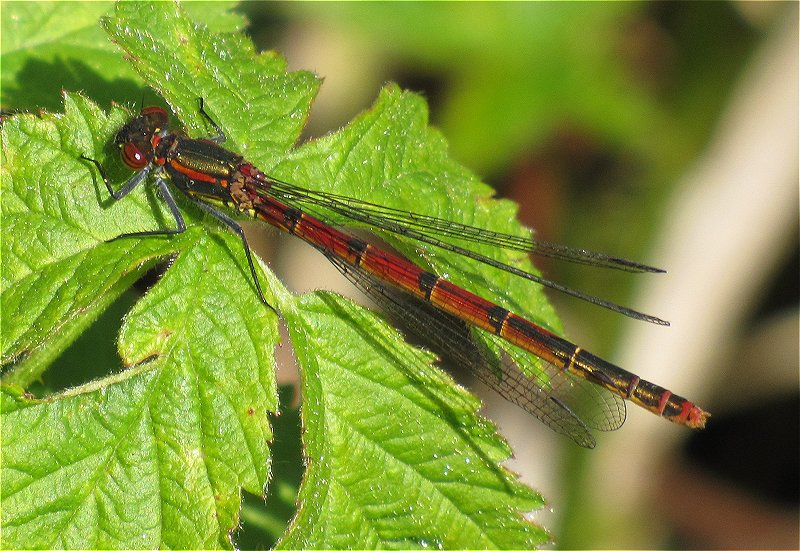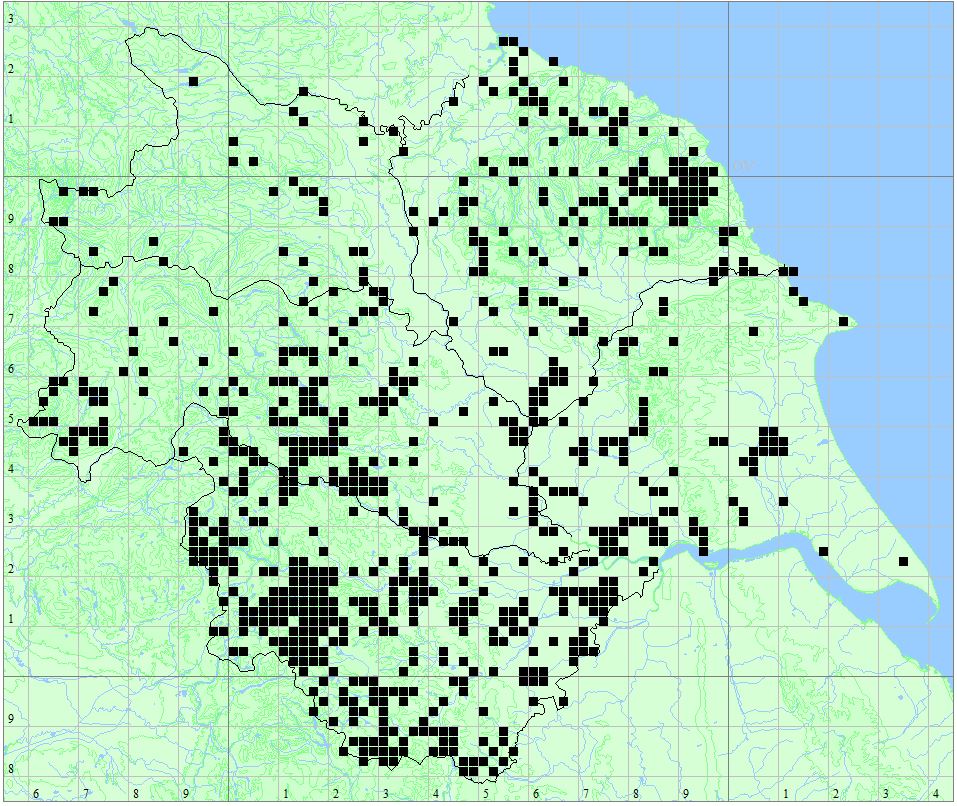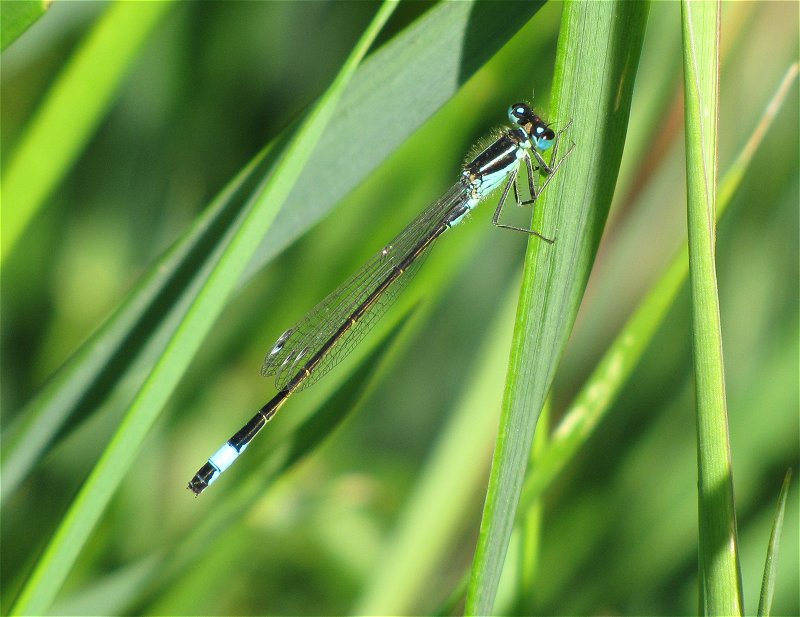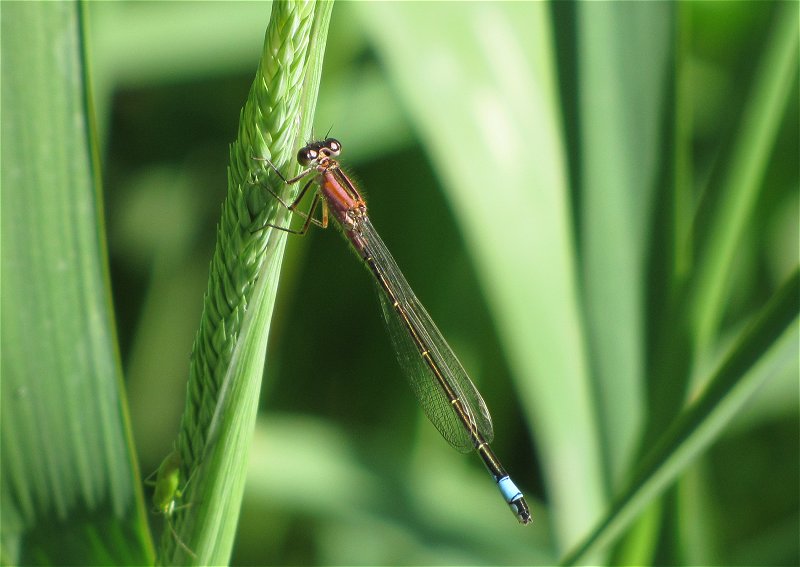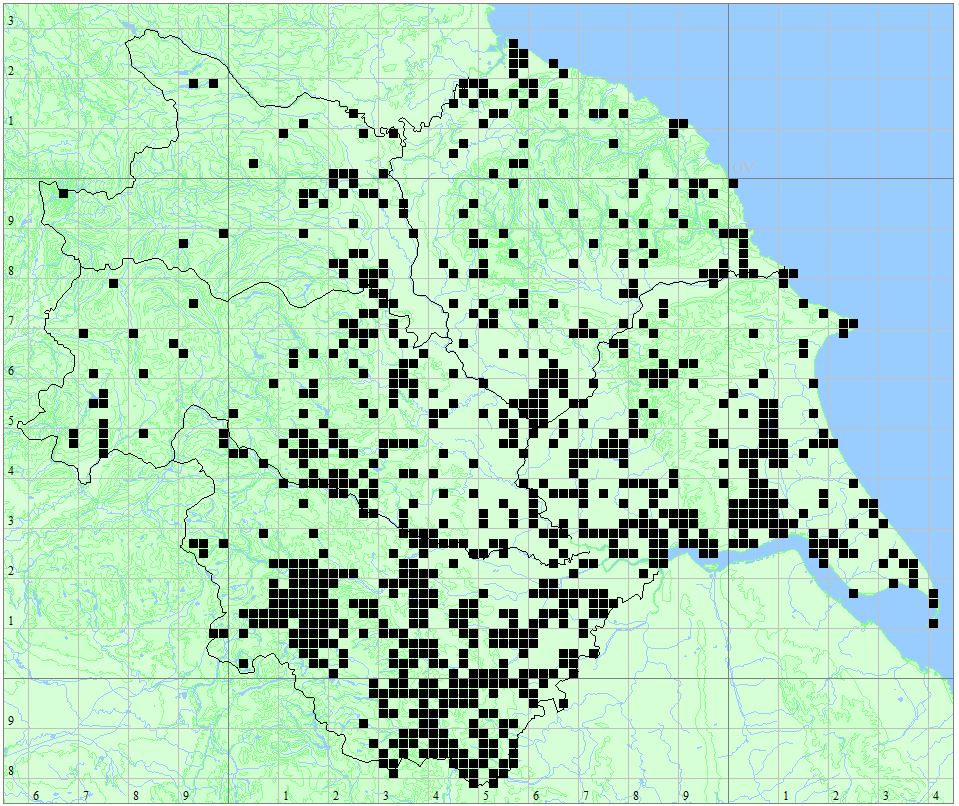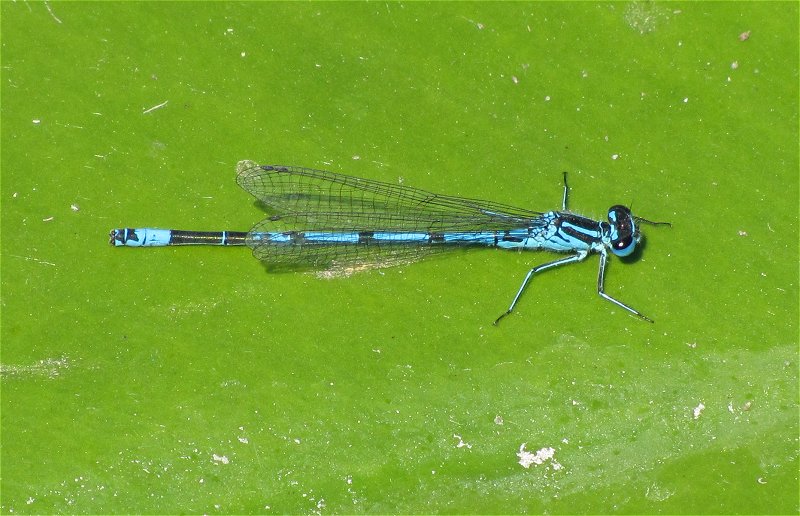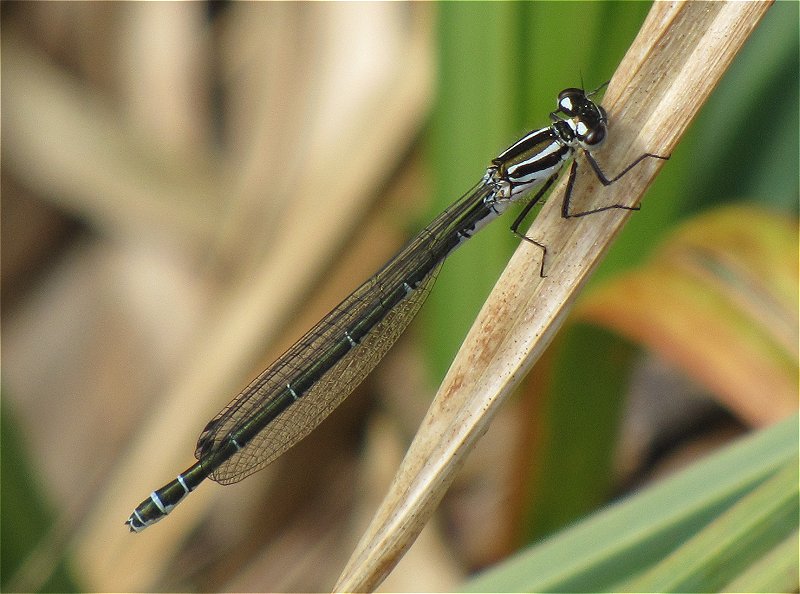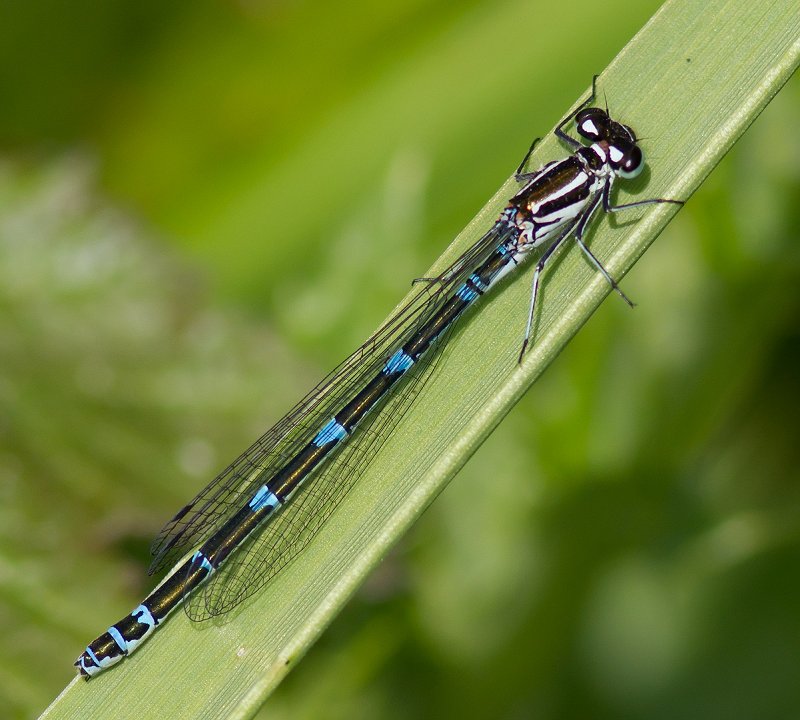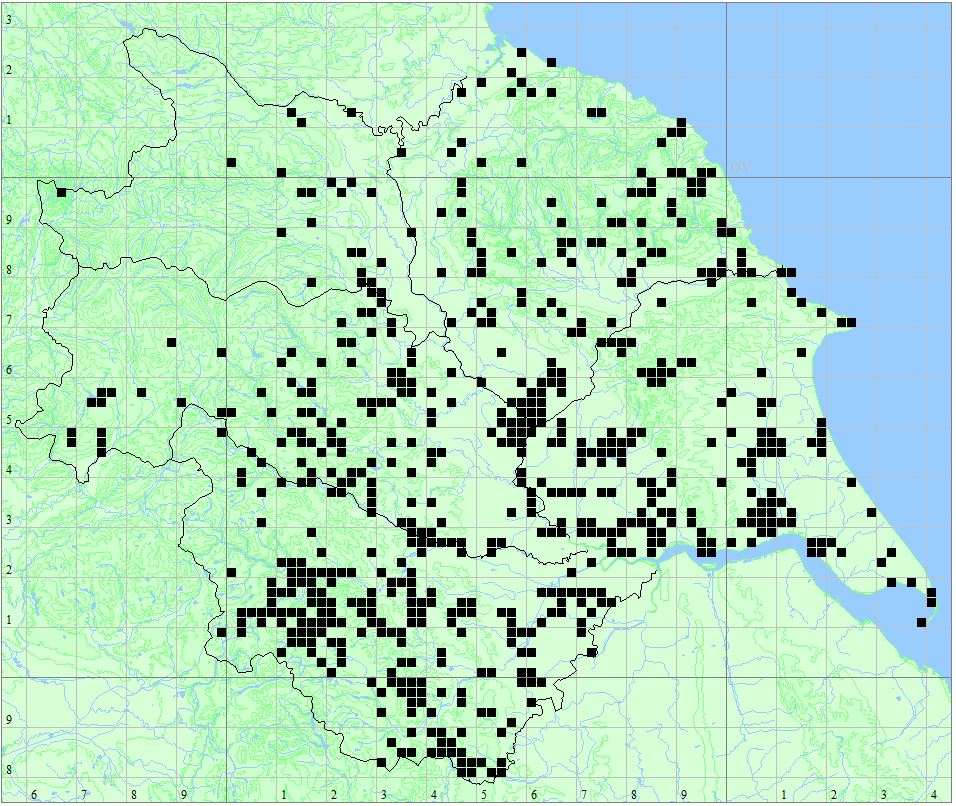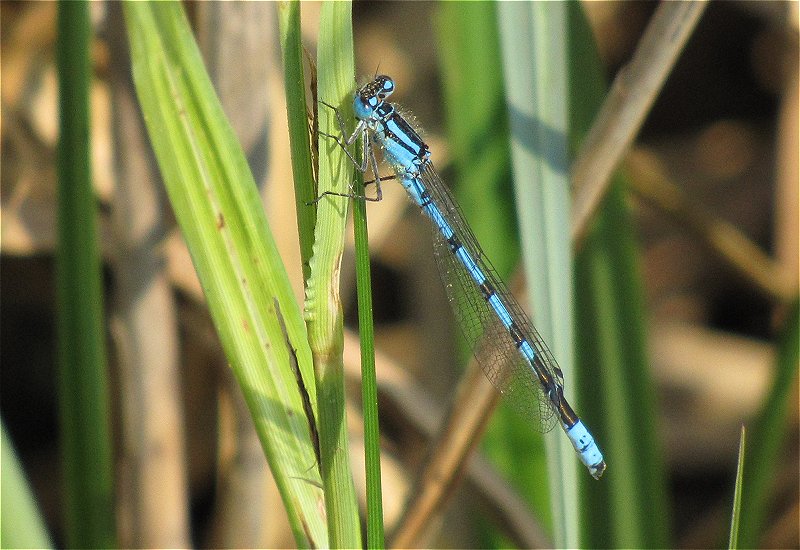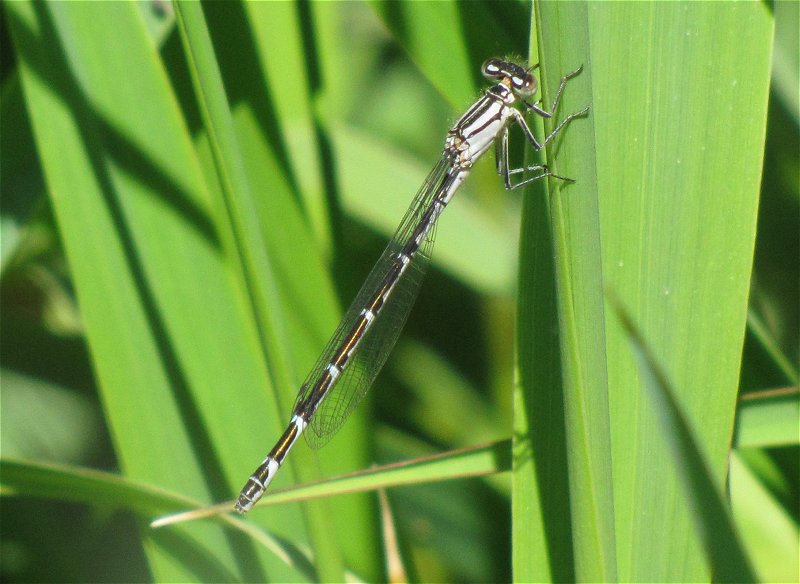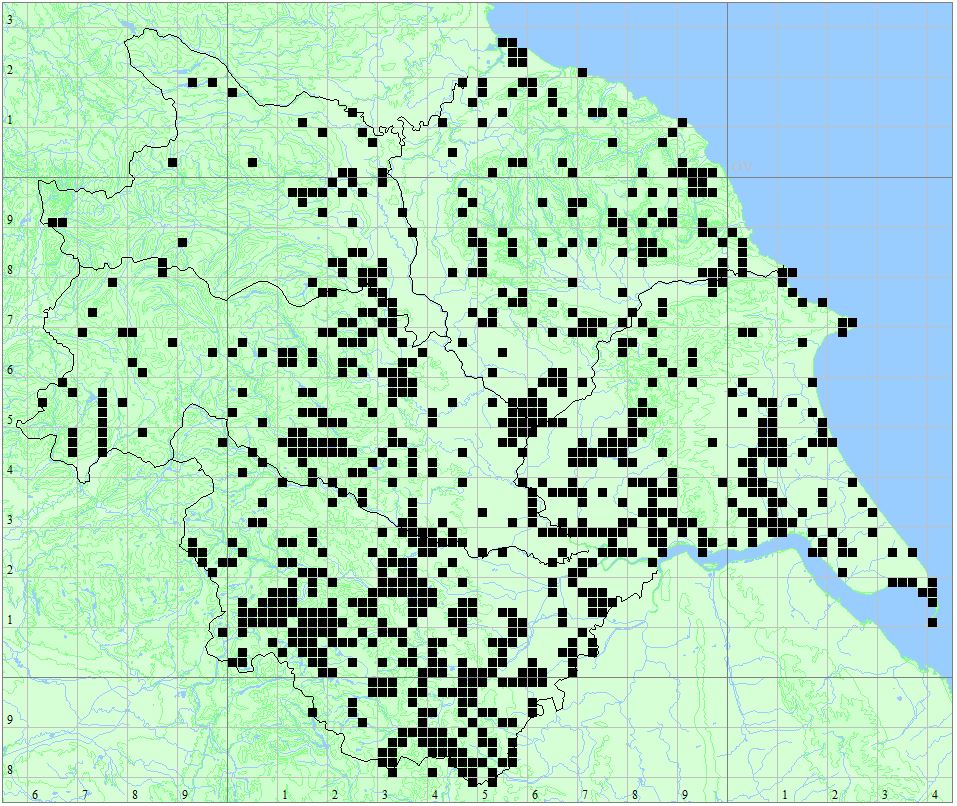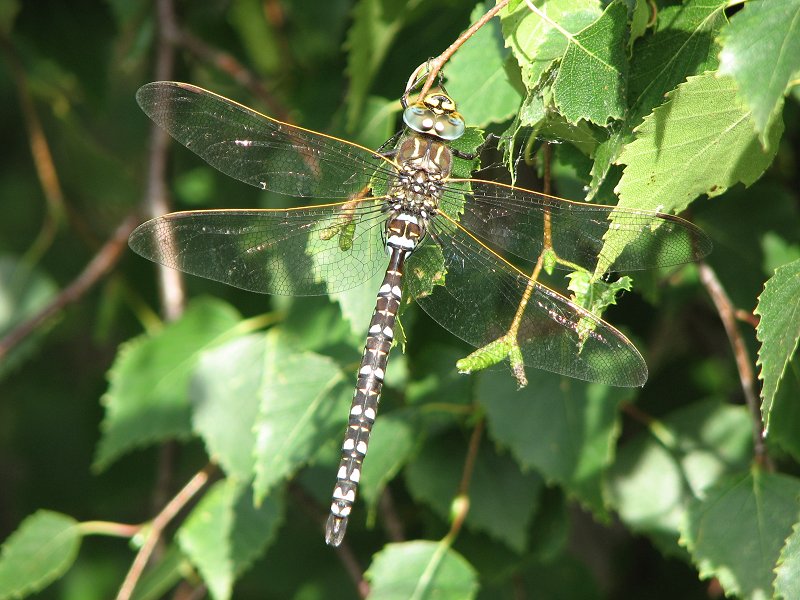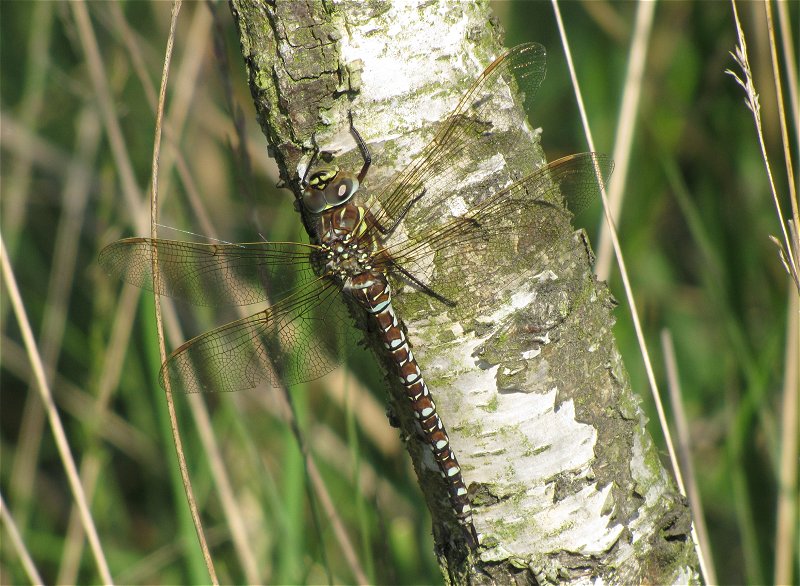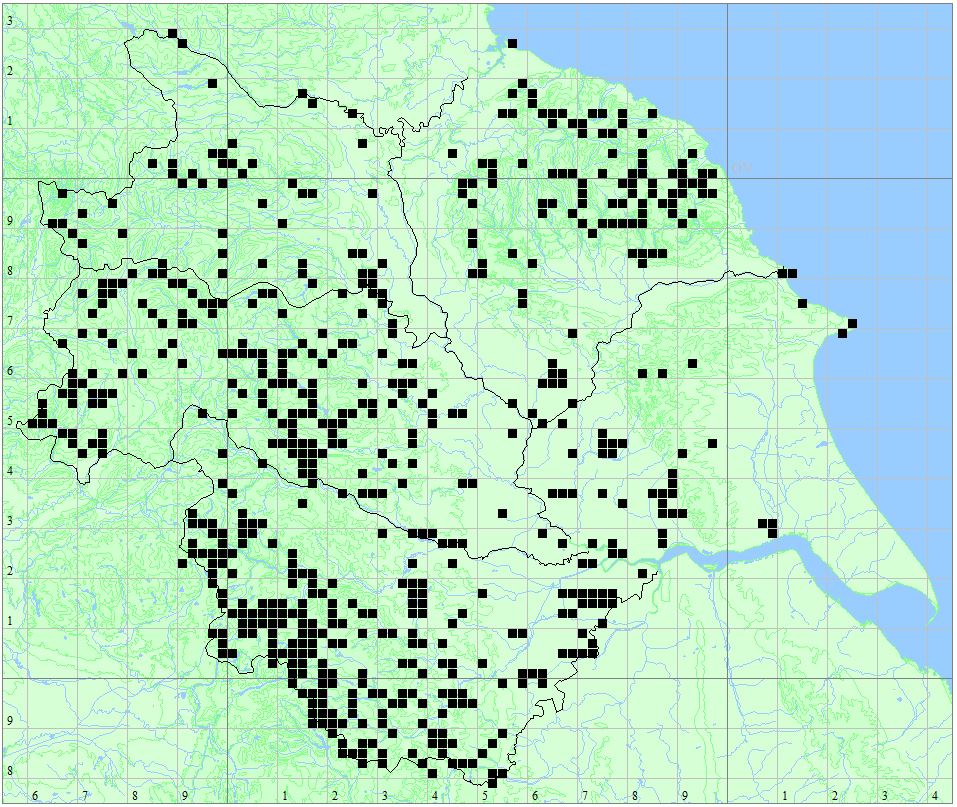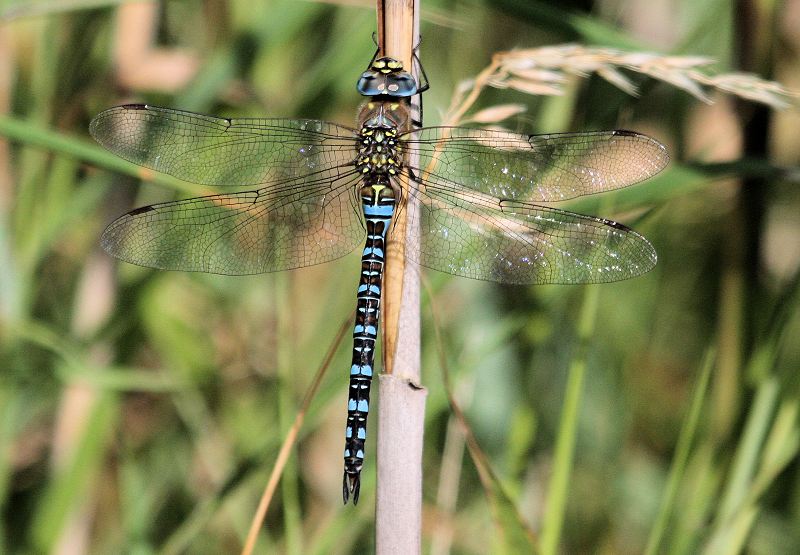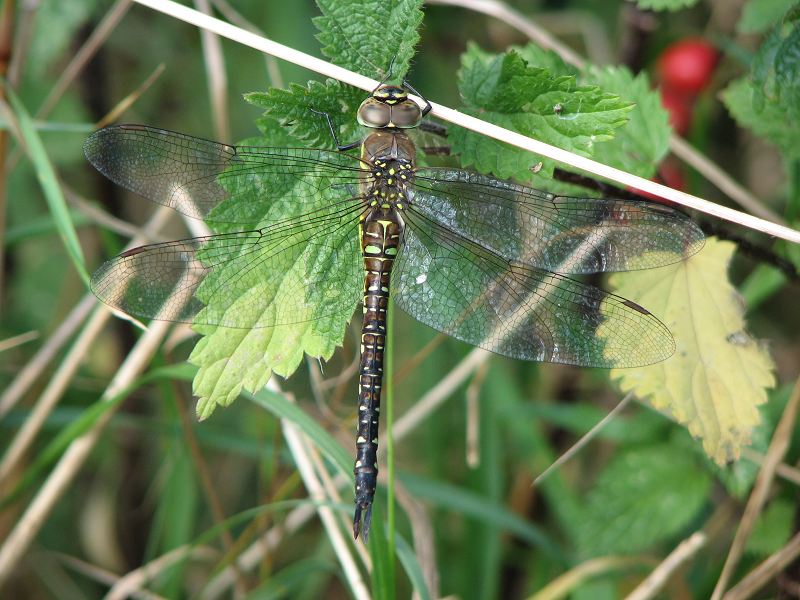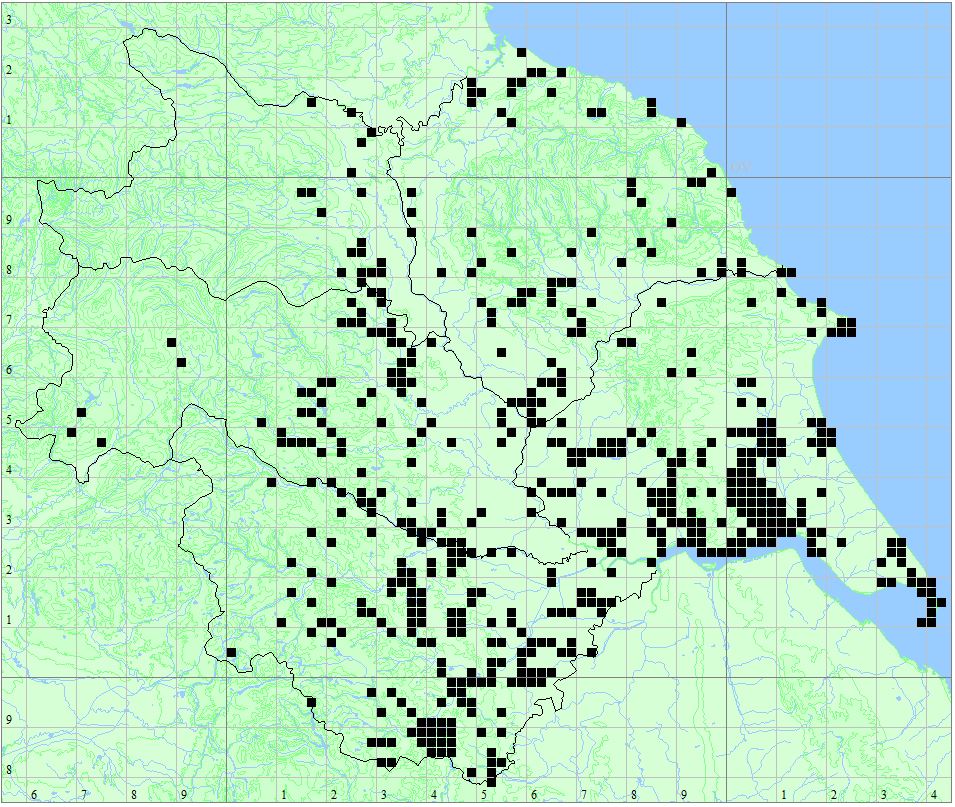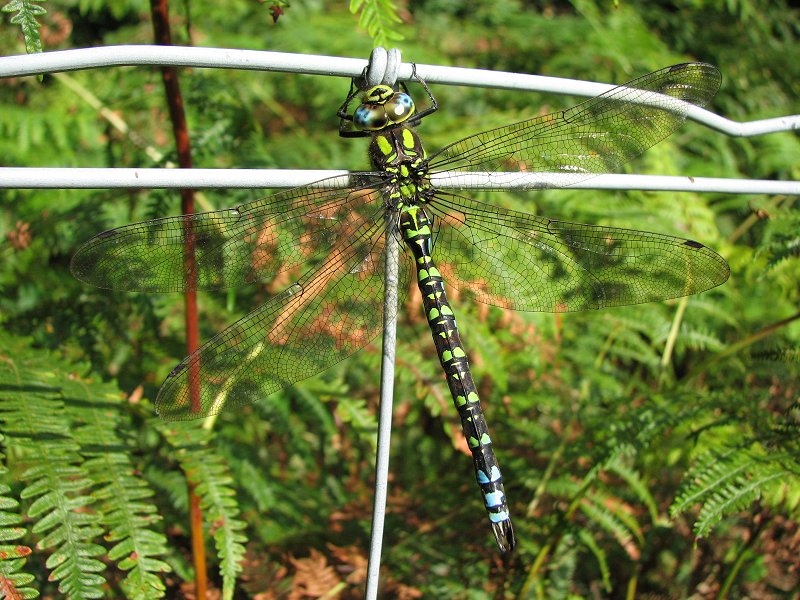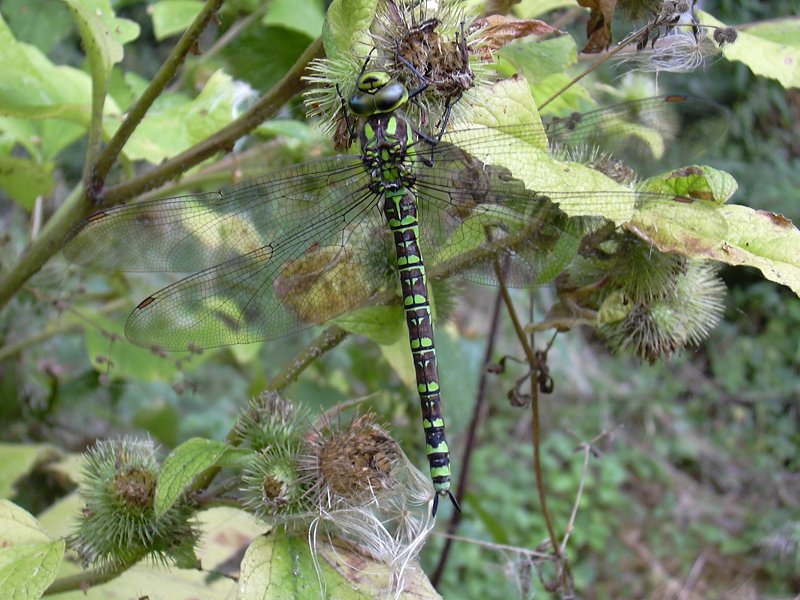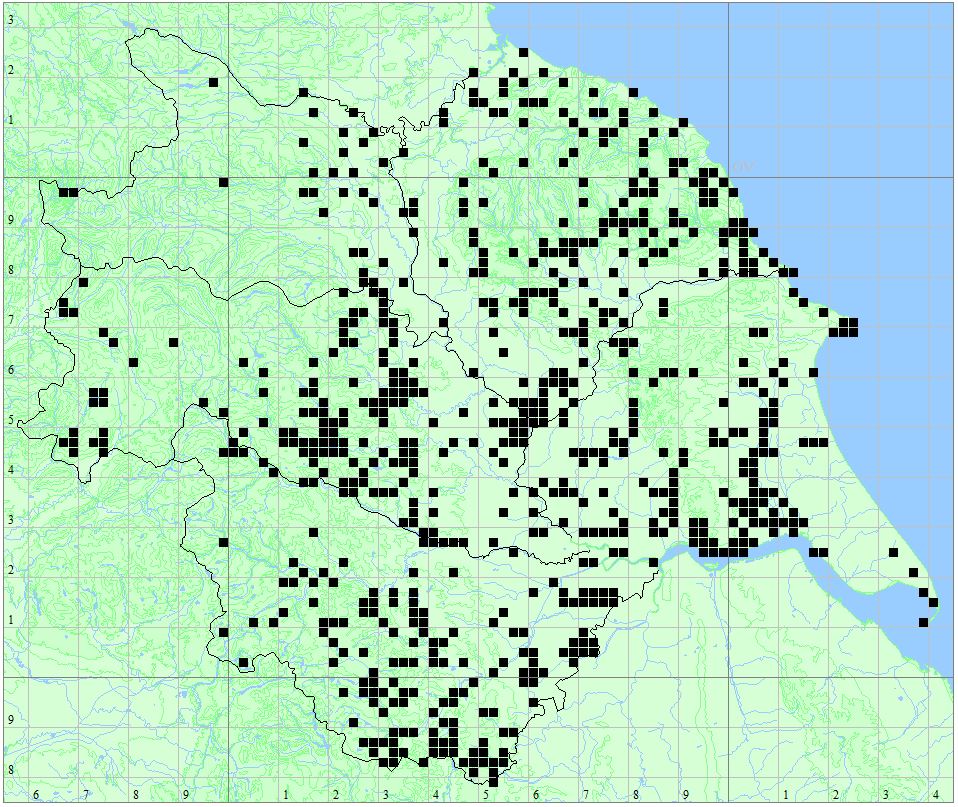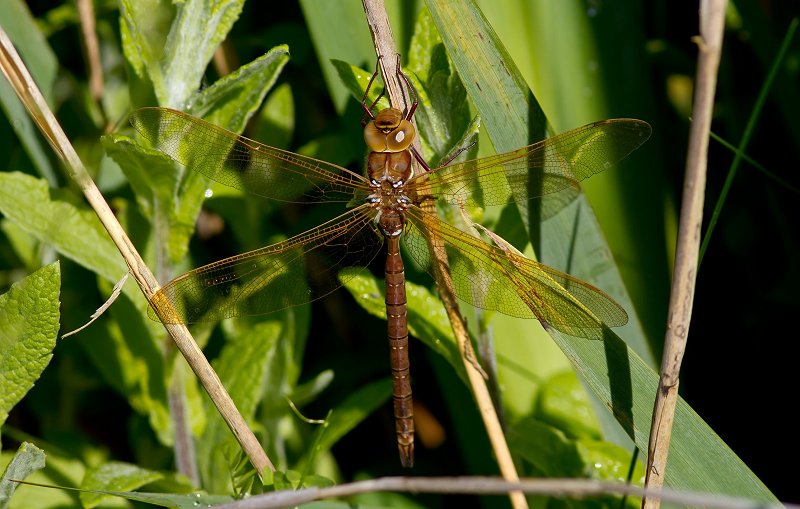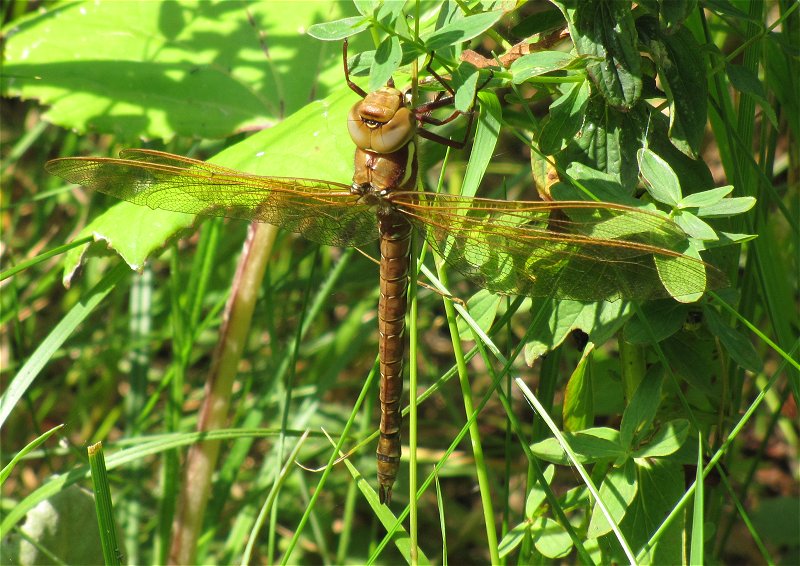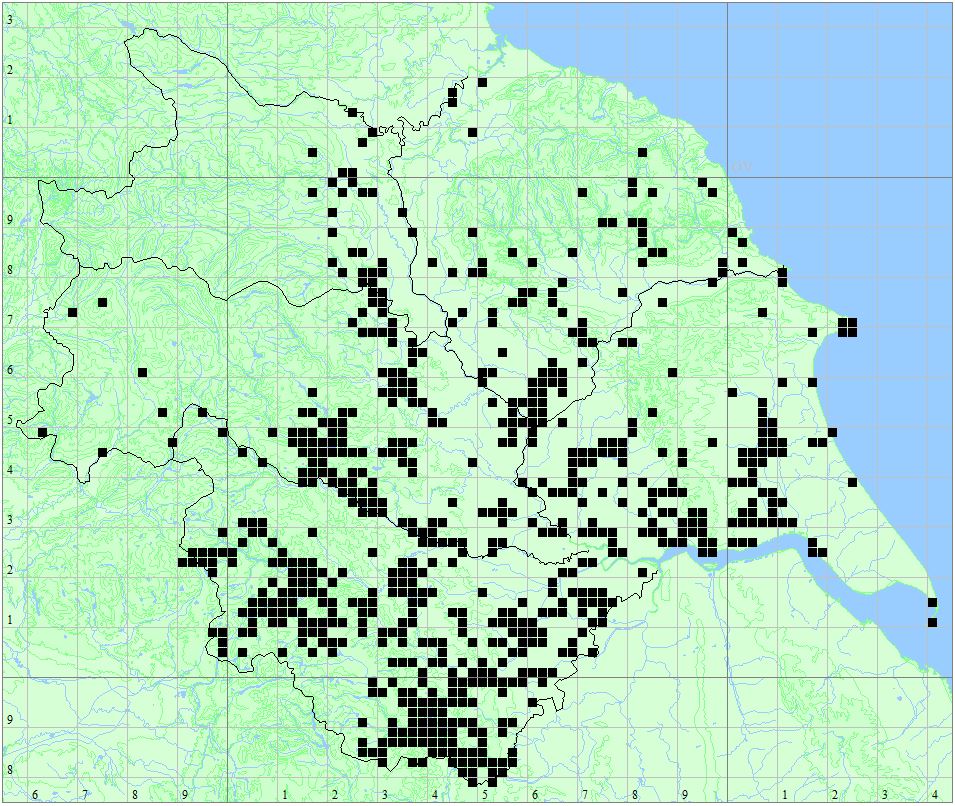<-Previous Species – Next Species->
Length
45-48mm; Wingspan: Male 61mm; Female 65mm; Hindwing 27-36mm; Larva: 30-40mm
Males
Translucent wings with a broad, dark iridescent blue-black band on outer part of both wings, there is no pterostigma. Body is metallic blue-green. Immatures wing band is dark brown.
Females
Translucent pale green wings, white ‘false pterostigma’, larger on forewing than hindwing, metallic green body. Sometimes androchrome females are observed (male coloured females), these can be identified by the ‘false pterostigma’ which males lack.
Behavior
Males are territorial, though large numbers can be found together. They attract females by flicking their wings open whilst performing an aerial dance in front of them, flopping down on to the egg-laying site. Females stay away from water unless looking for a mate or egg-laying. Adults will make use of nettle beds and tall grasses to rest.
Habitat
Mature, slow-flowing streams, rivers and canals, with muddy sediment. Can overlap with Beautiful Demoiselle where habitat contains patches of sand and gravel. Prefers open banksides, where as Beautiful Demoiselle will happily use shady areas. Adults of both sexes can be found well away from water and ponds where breeding is unlikely, thought they will breed in lakes adjacent to rivers. Sensitive to waterway management (clearance of vegetation) and pollution.
Flight Period
 Status
Status
Abundant along occupied rivers and streams.
Distribution Map
Locations
- Rodley Nature Reserve
- Thorpe Marsh
- Paull Holme Strays
- Treeton Dyke
- Rabbit Ings
- River Foss, Towthorpe Bridge
- Forge Valley NNR
- Pugneys Country Park
- Nosterfield Local Nature Reserve
- Fairburn Ings
- Potteric Carr
- Spurn Point
- River Hertford
- Pocklington Canal
- North Cave Wetlands
- Market Weighton Canal and Newport Ponds
- Filey Dams
- Tophill Low Nature Reserve
